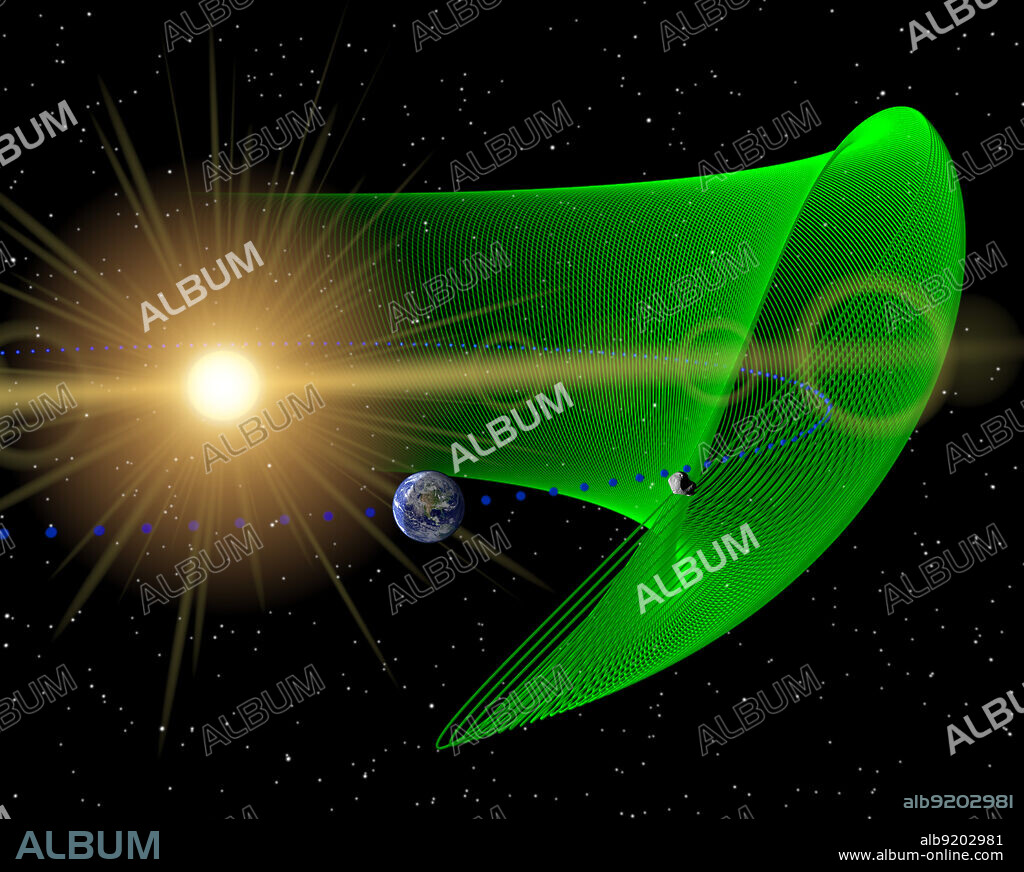alb9202981
2010 TK7, Trojan Asteroid Shares Orbit with Earth

|
Añadir a otro lightbox |
|
Añadir a otro lightbox |



¿Ya tienes cuenta? Iniciar sesión
¿No tienes cuenta? Regístrate
Compra esta imagen.
Selecciona el uso:

Título:
2010 TK7, Trojan Asteroid Shares Orbit with Earth
Descripción:
Ver traducción automática
2010 TK7, the first known Earth Trojan asteroid, discovered by NEOWISE, the asteroid-hunting portion of NASA's WISE mission. Trojans are asteroids that share an orbit with a planet, circling around the sun in front of or behind the planet. They circle around stable gravity wells, called Lagrange points, which circle the sun like Earth does. Asteroid 2010 TK7 has an extreme orbit that takes the asteroid far above and below the plane of Earth's orbit. The motion above and below the plane is referred to as an epicycle. In addition, the asteroid moves within the plane of Earth's orbit in what is called libration, circling horizontally around its stable point every 395 years. Typically, Trojan asteroids, for example those that orbit with Jupiter, don't travel so far from the Lagrange points. They stay mostly near these points, located where the angle between the sun and Earth is 60 degrees. Asteroids near a comparable position with respect to Earth would be very difficult to see, because they would appear near the sun from our point of view. WISE was able to spot 2010 TK7 because of its eccentric orbit, which takes it as far as 90 degrees away from the sun. WISE surveyed the whole sky from a polar orbit, so it had the perfect seat to find 2010 TK7.
Crédito:
Album / NASA/JPL-Caltech/UCLA / Science Source
Autorizaciones:
Modelo: No - Propiedad: No
¿Preguntas relacionadas con los derechos?
¿Preguntas relacionadas con los derechos?
Tamaño imagen:
No disponible
Tamaño impresión:
No disponible
Palabras clave:
2010 • ACCIONES • ARTE • ARTISTA • ASTEROIDE • ASTRONOMIA • CELESTE • CELESTIAL • CONCEPTO • CUERPO • DESCUBRIDOR • ENCUESTA • ESPACIAL • ESPACIALES • ESPACIO • EXPLORADOR • ILUSTRACION • INFRARROJOS • MENORES • MISION • OBJETO • ORBITA • PEQUEÑA • PEQUEÑO • PEQUEÑOS • PLANETA TIERRA • PLANETA • PLANETOIDE • SISTEMA • SOLAR
 Pinterest
Pinterest Twitter
Twitter Facebook
Facebook Copiar enlace
Copiar enlace Email
Email
